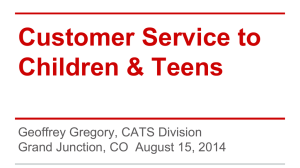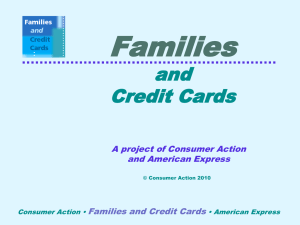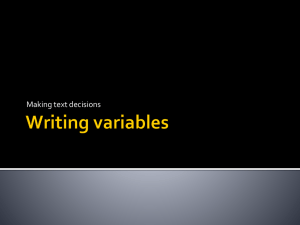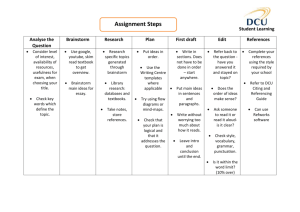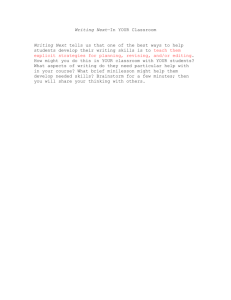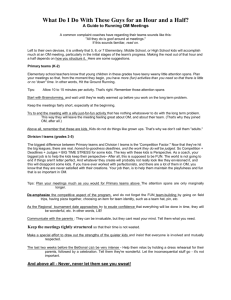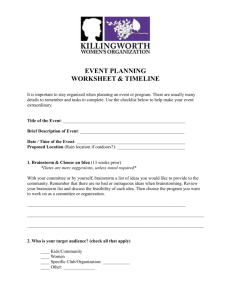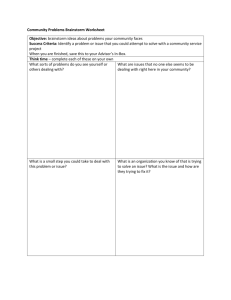Research Skills - Shell Cove Public School
advertisement
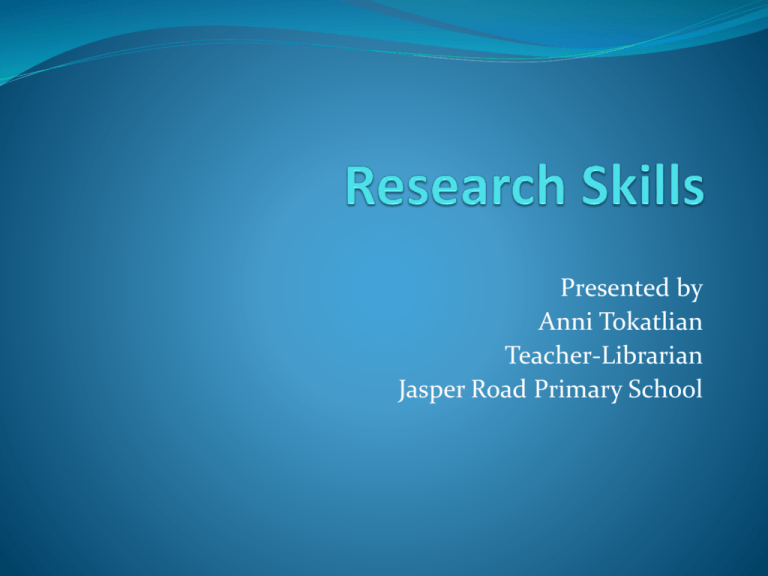
Presented by Anni Tokatlian Teacher-Librarian Jasper Road Primary School Information Search Process (ISP) Information Search Process How parents can help? demonstrate and discuss how information is found and used e.g. show how information is found and used in the purchase of a new appliance or electronic device for the home or in the choice of a holiday destination involve the student in information tasks and decision making which arise in the home, work experience program, sporting teams, etc. encourage the critical discussion of information encountered outside the school in terms of credibility, bias and other characteristics take an active interest in the information tasks undertaken by the student at school by promoting the information process steps of the information skills process. Information Search Process Defining What do I really want to find out? Brainstorm Bubbl.us Say back to a parent what the task is (“I need to find out about…”) Identify key words in a question Keyword challenge Identify and define key words of the task, using dictionary, encyclopaedia as necessary Cluster key words Clusty.com Ask for Kids Identify sub-topics which set directions for the task Decide on the limits of the task Locating Where can I find the information I need? Outline own knowledge of the topic and decide whether more information is needed Brainstorm alternative search words Make up a search plan, charting sources and locations according to the information process Be familiar with the Dewey Decimal Classification system (DDC) Use library catalogues in school and public libraries to locate resources Use electronic information e.g. websites, DVDs, online databases, CD-ROMs, webcasts, podcasts TaLe-Teaching and Learning Exchange Find more than one source and format of information for the task e.g. Website, book, DVD Searching the library catalogue Types of searches Boolean searching – and, or and not Google – Advanced search Askkids.com Kidsclick Kids' search tools Study search Boolify Google – Advanced search Ask for kids Kidsclick Kids’ search tools Selecting What information do I really need to use? Use Contents page and Index Skim and scan using subheadings in books and sections of websites Select the appropriate picture from a range of pictures Find answers in more than one source to key questions of the task Use more than one medium (e.g. DVD, audio, book, internet) Develop a note-taking system, selected from a range of options, including electronic Compare and evaluate information from different sources Recognise fact, opinion, fiction, decide which is required Note taking proforma snow Focus question or topic rainfall climate What is the climate like in Antarctica? Original text (cut and paste) or reference to original text weather Notes in point form Note taking proforma Keywords temperature Note taking skills With thanks to Maggie Roche who developed these pages at this site (accessed 13th Sept. 2009) Organising How can I use this information? Answer the question “Why am I doing this?” (purpose) Discard irrelevant information after reviewing purpose or task Take key words/ideas and combine them into whole thoughts Group related thoughts Use tables, spreadsheets, databases, graphics as appropriate Use information collected to develop own hypothesis or argument Outline the structure of the completed task Graphic organisers on the web Presenting How can I present this information? Brainstorm possible presentation forms e.g. PowerPoint, video, picture book, Podcast Choose a presentation style most suited to purpose, audience and content of material Draw a picture and label with key words which summarise findings, explain the picture to others Include a bibliography listing the resources used Citation Machine Assessing What did I learn from this? Brainstorm “Steps that we took to do this task” and put them into sequence. Analyse the steps, using questions such as “How did we make up our answer?” “What could we do next time?” Respond to the questions : “What was easy?” “What was hard?” “What did I learn?” “What could we do next time?” Consider information process and own performance of each step: “I’m good at …” “I need to improve on …” “I can improve by …” “I learnt …” Analyse strengths and weaknesses of argument/content. Use a graphic organiser like KWL to assist with self-assessment http://www.eduplace.com/graphicorganizer/pdf/kwl.pdf Copyright issues What is copyright? Kids and plagiarism - Sydney Morning Herald Further reading / exploring Information skills in the school Cool Web 2.0 tools for schools Click magazine Dewey to the rescue – an online tour of the Dewey Decimal Classification system (DDC)
